#Albert City Historical Museum
Text
Roadside Attractions in Northwest Iowa!
My husband Keith and I headed to northwestern Iowa. We attended the 2024 Red Power Round Up, an International Harvester event held in Spencer, Iowa. We found lots of roadside attractions during our travels. Hosted by Iowa Chapter 5 of the IHCC group, the location was the Clay County Fairgrounds. This beautiful show was well planned. Then the rains came and ended the event early. Floods caused…

View On WordPress
#agricultural roots#Agricultural Treasures Guidebook#Albert City#Albert City Historical Museum#art#Art Deco Theater Pocahontas#barns#beauty#Busiest Little Town in Iowa#Claus Thams family#Clint Hansen#closed roads#Danish Windmill#devastation#dike#downtown Manning Iowa#Elkhorn Iowa#Farm Collector#finds#flooding#Fort Peterson#Freedom Rock#German barn#German Hausbarn#German heritage#Grotto of Redemption#Harold Schmidt#Historic Trinity Church#history#ice cream
3 notes
·
View notes
Photo

Cécile and Marie-Grace were released alongside the best friends line of dolls, and are a pretty transparent gimmick to get people to buy two dolls at once. That being said, I actually kind of love their collection.
Their story is set in New Orleans in 1853, which is a pretty great way to represent the Antebellum South without having a Scarlett O’Hara doll. New Orleans was one of the few places in the south with a robust middle class. Everywhere else had tremendous wealth inequality with absurdly rich plantation-owners, barely surviving poor Whites, and slaves.
Cécile is of the gens de coleur libre, that is, the free people of color, a class of New Orleans citizens born out of the plaçage system in which White men would take women of color as informal second wives. Plaçees held a really interesting position, as they could legally claim inheritance once their patron died, and the children born of plaçage could be named heir of an estate. Plaçees were also allowed to develop assets and run small businesses. All of this created a level of generational wealth that was unique among African-Americans at the time. Today, their descendants are known as Creoles.
As far as Marie-Grace goes, I don’t think she’s Cajun, just French-American. Cajuns are a specific group, the Catholic descendants of the French colonizers of Acadia, now called Nova Scotia, who were forced by the British out of the home. They settled mostly in the fertile Mississippi delta, and maintained a rural, somewhat insular way of life. Marie-Grace is the city-dwelling daughter of a doctor, so probably just the descendant of regular French citizens who settled in New Orleans.
Hair-wise, this is the era when girls tied their hair up with rags at night to have fat sausage curls in the morning. Most photographs and paintings that I’ve seen of Black girls in the era show them with their hair tied up, but there are a few who had curls.


Marie-Grace’s face-framing curls are a little bit more Jan Brady than 1850s, but it’s cute on her, so I’ll give her credit for that. The long hair isn’t inaccurate.

There’s something about Cécile’s dress that keeps saying “wrong” but I can’t quite put my finger on it. A more accurate dress would be more along the lines of something like this:

(The Victoria & Albert Museum)

(The Victoria & Albert Museum)
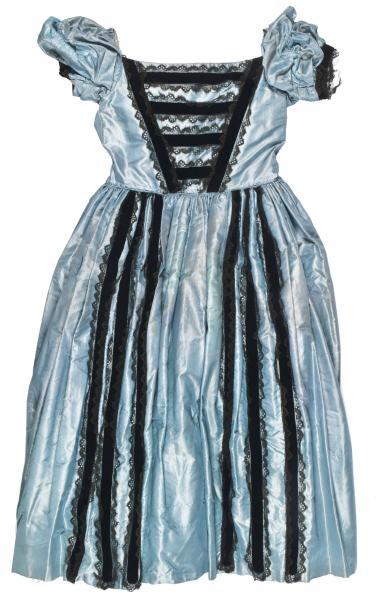
(New York Historical Society)
Marie-Grace’s dress seems to have been inspired by this portrait of Creole children:

(credit to @in-pleasant-company for finding it)
Cécile’s pillbox hat is a style that was adopted more in the late 1860s and 1870s. A more accurate hat would also have her in a “coal scoop” bonnet.
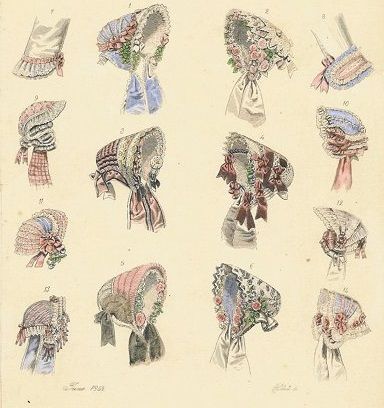
Her gloves, however, are accurate and adorable!
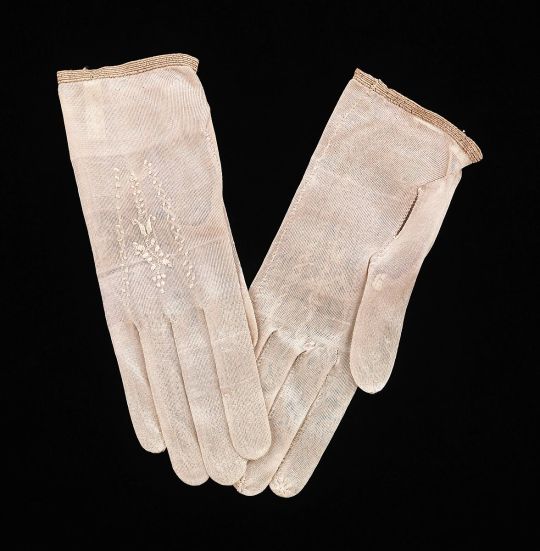
(The Met Museum)
Marie-Grace is wearing a kind of sun hat that was popular for children:

(The Met Museum)
Marie-Grace’s fan looks typical of the French fans that were popular at the time. They were usually painted with pretty pastoral scenes instead of flowers, however, although Chinese fans at the time frequently had floral themes.

(The Philadelphia Museum of Art)

(The Victoria & Albert Museum)
The shoes are definitely late Victorian rather than 1850s. Fine city ladies in the 1850s would be wearing boots made out of silk with leather soles:

(The Met Museum)
279 notes
·
View notes
Text
Images of 1912 fashion -
Left 1912 (April) Afternoon dress by Beer, Les Modes - photo by Talbot. From les-modes.tumblr.com/page/21 784X1920.
Center 1912 (June issue) Robe d'après-midi par Redfern from Les Modes. From Bibliothèque nationale de France via Wikimedia; fixed spots w Pshop 1453X2265.
Right 1912 (January) Tailored afternoon suit by Linker & Co., Les Modes - photo by Félix. From les-modes.tumblr.com/page/14 705X1920.

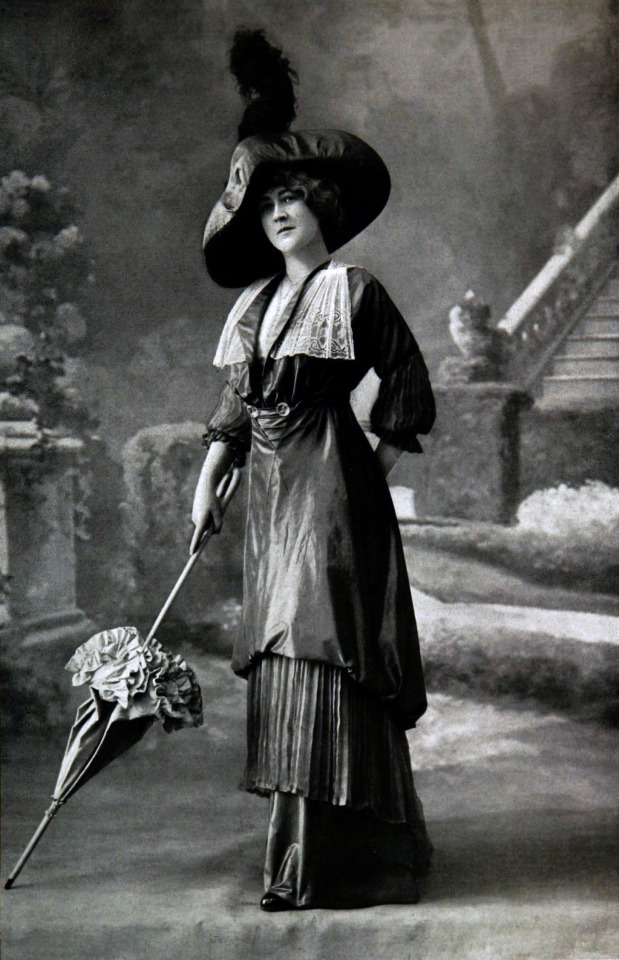
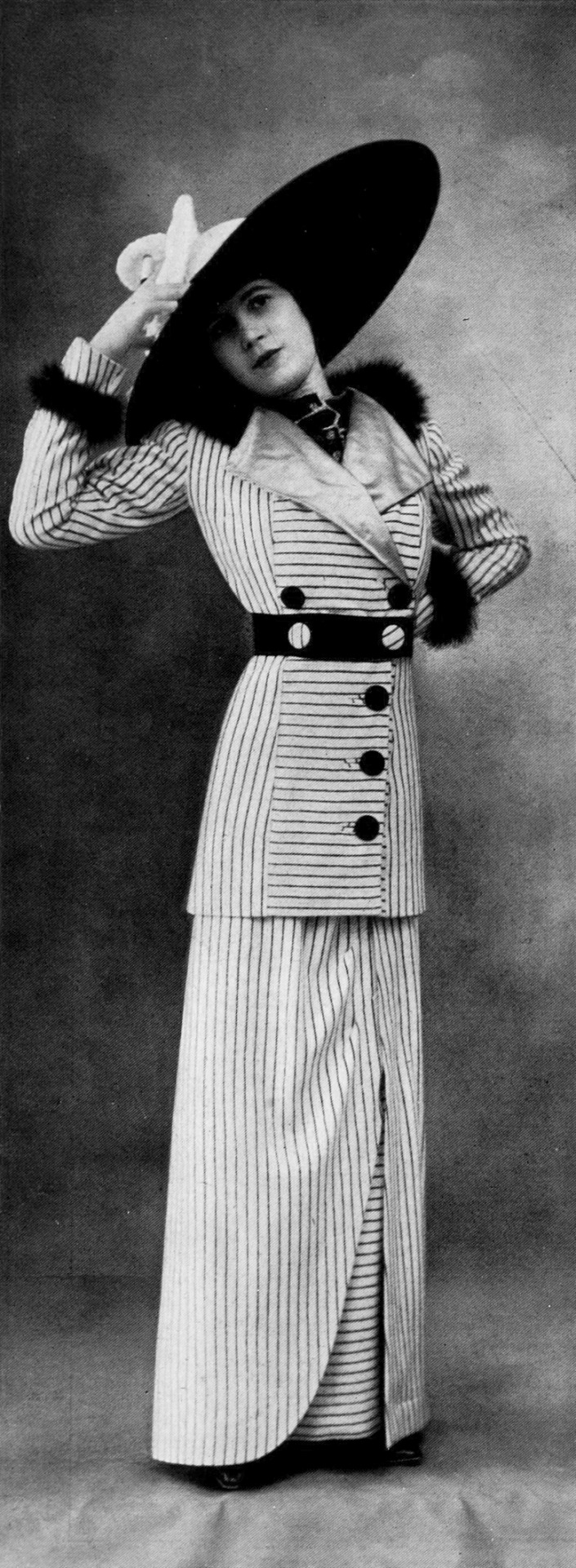
Left 1912 (August issue) Journal des Demoiselles print by A. Baeurlé (Rijksmuseum - Amsterdam, Netherlands). From their Web site 3277X4834.
Right 1912 Journal des Dames et des Modes. From tumblr.com/antiquebee/733887948520652800/journal-des-dames-et-des-modes-1912? 956X1705.

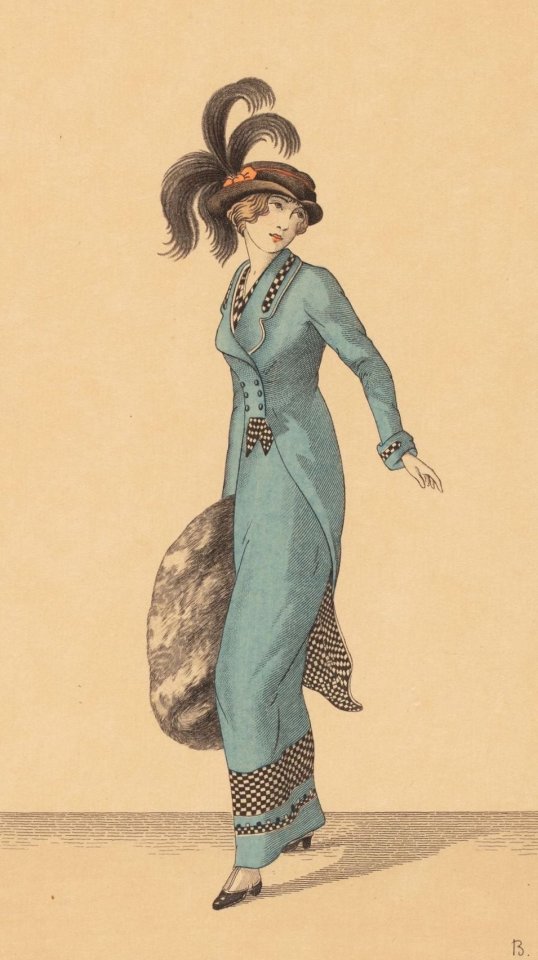
Left 1912 (September) Laferrière evening gown - photo by Félix, Les Modes. From les-modes.tumblr.com/page/10; fixed bigger spots w Pshop 1265X1920.
Right 1912 (September) Lelong evening gown, Les Modes - photo by Talbot. From les-modes.tumblr.com/page/10 1236X1920.

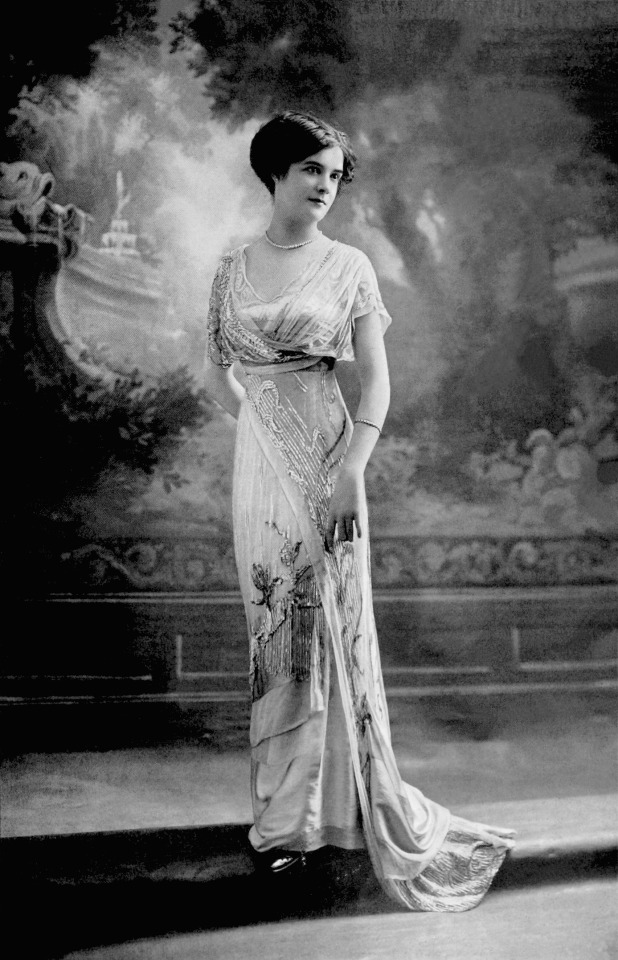
1912 (Winter) Jeanne Paquin evening gown (Helen Larson Historic Fashion Collection, FIDM Museum - Los Angeles, California, USA). From atkinreport.com/2015/07/21/television-academy-fetes-its-costume-design-emmy-nominees/ 1200X1600.

1912 (June) Vita Sackville-West at Ascot cropped 1396X1022
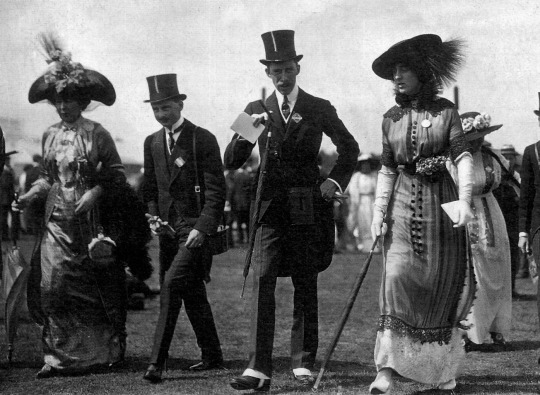
1912 (May) Dresses for the races by J. Dukes, photo by Reutlinger. From castaroundlesmodes.tumblr.com/post/68584847179/my-little-time-machine-dress-for-the-races-by?is_related_post=1 1280X1877.

Left 1912 Afternoon dress by Jeanne Hallée (Metropolitan Museum of Art - New York City, New York, USA). From their Web site 2568X2760.
Right 1912 (September issue) Robe d'après-midi par Redfern from Les Modes. From Bibliothèque nationale de France via Wikimedia; fixed bigger spots w Pshop & trimmed 1334X2118.

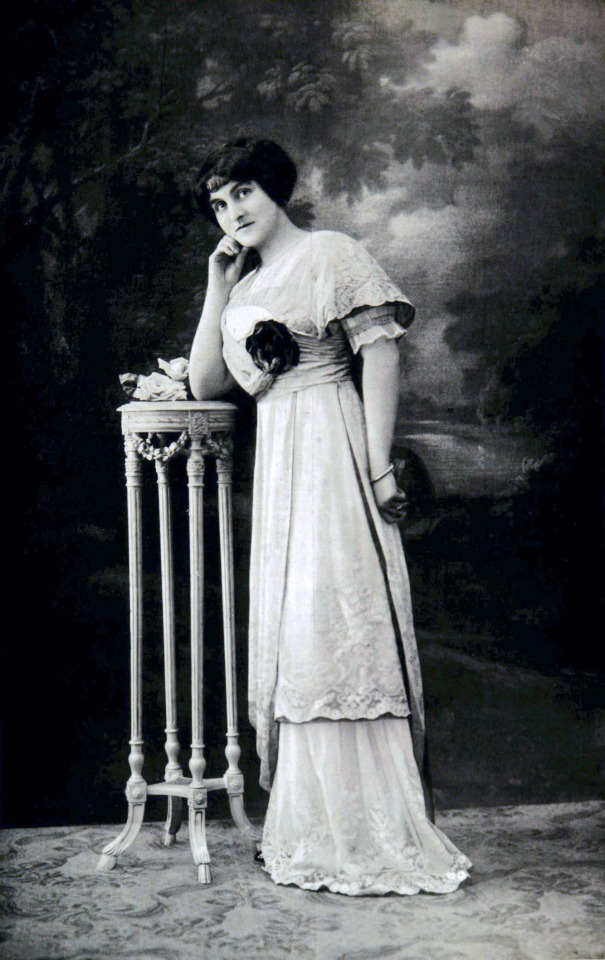
1912 Frieda Countess Logothetti née Baroness Zwiedinek of Südenhorst (1866-1945) by Karel Žádník (Slovácké Muzeum - Uherské Hradiště, Zlin Region Czech Republic). From Wikimedia 2784X3855.

Left 1912 Gustav Beer dress (National Gallery of Victoria - Melbourne, Victoria, Australia). From tumblr.com/lenkaastrelenkaa 1280X1855.
Right 1912 L'Adieu dans la nuit. Robe du soir de Paquin (pl.9, in La Gazette du Bon ton, 1912-1913 n°6) by André-Edouard Marty. From edition-originale.com/en/ 1680X2528.

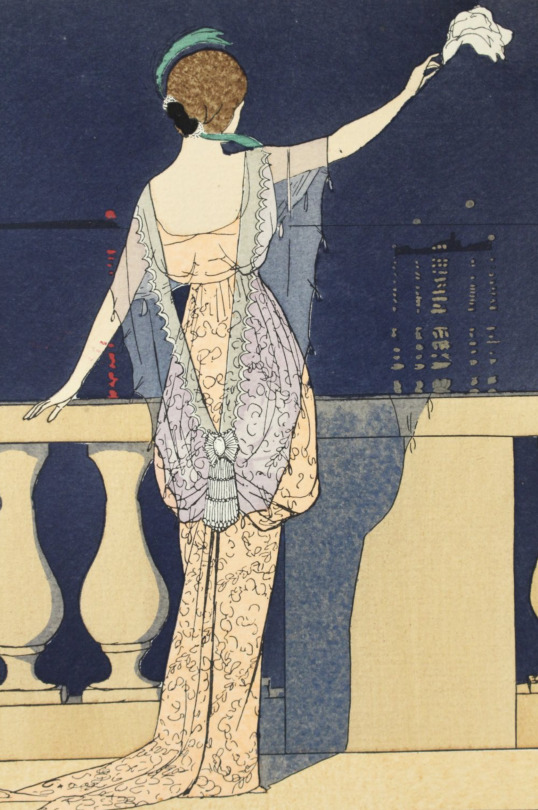
1912 Ladies attending the Henley Regatta in wide-brim hats, a feathered boa and curved-heel shoes. From vogue.co.uk/gallery/style-file-1912?image=5d54889ce144470008e44627 1280X1920.
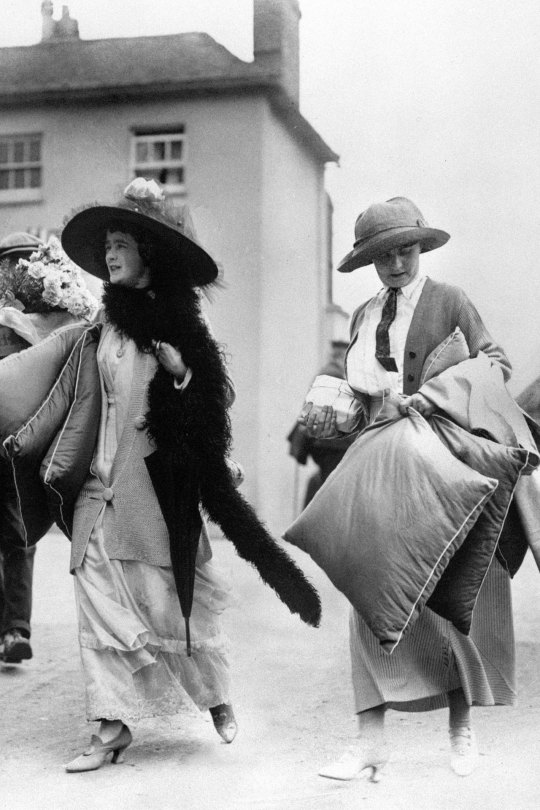
1912 Lady Cynthia Asquith by Bassano front and side 5112X3325.

1912 "Sorbet" by Paul Poiret (Victoria and Albert Museum). From omgthatdress.tumblr.com/page/2490.

#1912 fashion#1910s fashion#Belle Époque fashion#Edwardian fashion#Gustave Beer#Redfern & Sons#William Henry Fox Talbot#Linker & Co.#Félix#A. Baeurlé#Madeleine Laferrière#Lelong#Jeanne Paquin#Vita Sackville-West#J. Dukes#Reutlinger#Jeanne Hallée#Frieda Countess Logothetti#Karel Žádník#Cynthia Asquith#Bassano#Poiret#sorbet dress#flared over-skirt
22 notes
·
View notes
Text
The Cardboard Box
This was originally published in 1893. It was however pulled from Memoirs apparently at Doyle's request, originally appearing in just the first US edition and did not reappear until much later in His Last Bow.
Croydon is a large town less than ten miles south of Charing Cross. Historically part of Surrey and a borough in its own right in 1889, it was incorporated in Greater London in 1965.
It would later be home to the UK's sole international airport in the interwar years, which closed in 1959. The terminal building survives and there is a museum on site.
Croydon is today a major transport hub, home to the only tram network in Southern England, which was opened in 2000 using a combination of old railway lines and new street tracks. East Croydon is the main station on the London to Brighton Line, with fast electric trains to Victoria.
It has a theatre - no Shakespeare currently on though, sadly.
Croydon was within the Metropolitan Police District, so Lestrade is within this jurisdiction.
ACD would later run for Parliament as a Liberal Unionist, parting company from the Liberal Party because of his opposition to Irish Home Rule.
Wallington is also now in London and was already its own parish at this time.
The temperance movement was pretty big across the Protestant world by this point. Britain never went as far as the US in prohibition though - despite strong support in the Liberal Party, the Conservatives were resolutely opposed and the best they could do was high taxation, along with regulated opening hours that were introduced when the First World War began.
We get Lestrade's first initial - G.
Foolscap is an 8x13-inch sized paper that was commonly used in Europe and the British Commonwealth before A4 took over.
Shadwell is an area in the East End of London, on the river and then part of the docks.
The Albert Dock is probably the Royal Albert Dock. This closed in 1981 and an attempt to turn the area into a business park in 2013 has just resulted in an area that is good for filming zombie movies: https://www.theguardian.com/artanddesign/2022/jul/20/empty-promise-the-fantasy-city-within-a-city-that-turned-into-a-ghost-town
28 notes
·
View notes
Text
Experiencing Istanbul Through Photography
Maréva U, GABAM-ANAMED Post-Doctoral Fellow (2022–2023)


Fig. 1. Istanbul, street leading up to the Galata Tower (photo by Albert Kahn, 1913, No. A2307S, Albert Kahn Museum).
Fig. 2. Istanbul, Hagia Sophia, bronze door (photo by Gabriel Millet, Photo Archives, EPHE).
Photography is a technical and mechanical means of preserving a graphic representation of places, monuments, objects, people, and moments. It can be used as a historical testimony—an approach taken, for example, by the French banker and philanthropist Albert Kahn in his attempt to create the Archives of the Planet between 1908 and 1931[1]—or as a research and documentation tool—an approach we adopt in the humanities and social sciences, as evidenced by the photographs of monuments taken by the Byzantinist Gabriel Millet in the late nineteenth and early twentieth centuries.[2] Photography is also a means of expression that bears the signature of its author and whose objectivity is equal to any artistic work.
However, for several decades, photography has become, in the words of the sociologist Pierre Bourdieu, a “popular art.”[3] Film cameras and the slow and complex process of developing photographs have given way to digital cameras and smartphones capable of capturing, in high definition, fixed images of our private lives and our travels. These digital tools allow for easy and instantaneous snapshots. They lead us, in a consumerist way, to take an unlimited number of images, most of which are stored indefinitely in our smartphones or computers, without much consideration.
Photography is today overexploited and tends to be conditioned by the dominant visual discourses conveyed by the vast media landscape. These discourses construct cultural codes that define the value of a place, transforming a specific site into an appreciable, visitable, or unmissable and “instagrammable” place. The same places and monuments of Istanbul, as in any tourist city, become the subject of countless photographs, or rather the background in front of which people pose in their best light. These stereotypical photographs, whose colors are often oversaturated by smartphone filters that alter our perception of reality, flood the internet and social media. Unconsciously, these discourses and images influence the way we perceive, experience, and photograph places.
Since my arrival at ANAMED, I have wanted to build my own experience and perception of Istanbul, trying to detach myself from these visual dictates (the choice of black and white photography is partly a result of this intention). My research on the experience of the architectural space of Byzantine monuments has undoubtedly influenced my relationship to the city and to photography. Of course, the architecture of the Byzantine buildings attracted most of my attention.
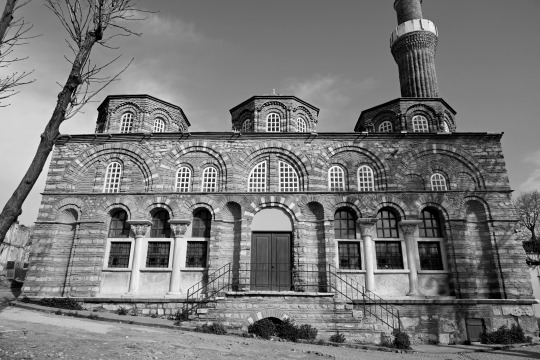

Fig. 3. Vefa Kilise Camii, western façade (photo by the author). Fig. 4: Küçük Ayasofya Camii (St. Sergius and Bacchus), columns and capitals (photo by the author).
Beyond photographic documentation, it is possible to look at and photograph the monuments we visit and study in a different way, especially by examining how they are integrated into the modern cityscape and how people use their spaces today. In doing so, details such as the contrast between the recently restored Tekfur Sarayı and the nearby pile of rubble, the calmness of a man praying in Fenari Isa Camii (Constantine Lips Monastery), or the movement of a child playing ball in front of Zeyrek Camii (Pantokrator Monastery) can attract our attention.
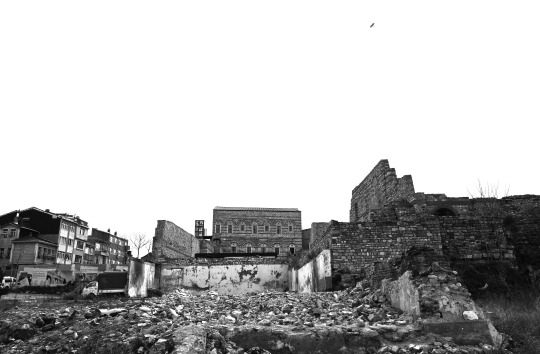
Fig. 5. Tekfur Sarayı (photo by the author).


Fig. 6. Man in Fenari Isa Camii (Constantine Lips Monastery) (photo by the author). Fig. 7. Child in front of Zeyrek Camii (Pantokrator Monastery) (photo by the author).
Besides Byzantine and Ottoman architectural heritage, Istanbul’s vibrant and colorful urban space deserves more attention. Istiklal Caddesi, which is difficult to avoid if you live in ANAMED, is passed by thousands of people every day. Many of them take selfies and pictures of each other or walk around with their smartphones in hand, continuously filming the hustle and bustle of the street, probably without really paying attention to the urban space. To experience it and to photograph it, it is necessary to slow down, to stop, to turn around, and to look up above the sometimes-oppressive crowd to observe and capture, for example, some architectural details or a man discreetly watching urban life from his window.


Fig. 8. Istiklal Caddesi (photo by the author). Fig. 9. Istiklal Caddesi (photo by the author).

Fig. 10. Sıraselviler Caddesi (photo by the author).
To experience Istanbul through photography, it is necessary to voluntarily lose oneself in the city and to be open to possibilities, opportunities, unexpected events, and encounters. In this way, it is possible to observe space, architecture, scenes of everyday life, people’s attitudes, spontaneous movements, effects of light and shadow. In short, the practice of photography allows us to see what is attractive and visible but also to pay attention to what is ordinary and sometimes hidden or invisible. Such an approach to the city can sometimes be uncomfortable, as it puts us in a contradictory position: between a voyeur, eager for aesthetic visuals, and a detached onlooker, aware of the various aspects of a place and its atmosphere. By unknowingly photographing children playing in the street, a man painfully carrying a washing machine, or a woman sitting on a bench focused on her phone, I experienced this ambivalent situation myself. Photography can thus lead us to question our relationships with others and sometimes to overcome our fears of rejection when we ask permission to take someone’s picture.


Fig. 11. Tünel, Istiklal Caddesi (photo by the author). Fig. 12. Children, Balat (photo by the author).
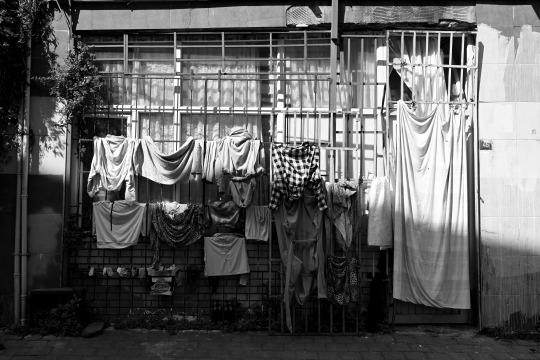
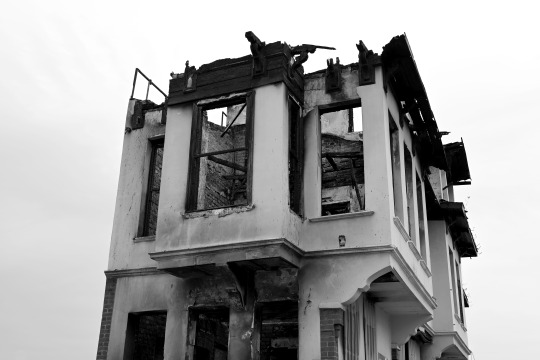
Fig. 13. House, Fatih (photo by the author). Fig. 14. House, Fatih (photo by the author).

Fig. 15. Man, Fatih (photo by the author).
The act of photography, in my opinion, has other effects on the person who practices it. It teaches us patience in order to capture the desired image, a quality we often lack in our productivity-driven society. Experiencing urban space through photography can allow us to take a break from the frenetic pace of our academic lives, as it leads us to develop an alternative conception of space and time.


Fig. 16. Cat, Fatih (photo by the author). Fig. 17. Woman, Taksim (photo by the author).
Therefore, photography is not just a matter of pressing a button to mechanically fix a part of the urban space and its inhabitants in an image. By walking around, looking for photographable objects and framing them, we appropriate the space and try to give a meaning to what we see. Photography can then be used by anyone (with a camera or a smartphone) to record their own experience of space, to visualize their perceptions and engagements with the place, or to explore their aesthetic and expressive capacities.
----------------------------------------------------------------------------------------------------------------------------------------------------
[1] https://albert-kahn.hauts-de-seine.fr/en/collections/presentation/a-documentation-project-for-the-world/the-archives-de-la-planete.
[2] https://explore.psl.eu/fr/ressources-et-savoirs-psl/projets-psl-explore/la-phototheque-gabriel-millet-ecole-pratique-des.
[3] Bourdieu, Pierre, ed., Un art moyen : essai sur les usages sociaux de la photographie (Paris: Les Editions de Minuit, 1965).
6 notes
·
View notes
Text
Wednesday, December 14, 2022 Canadian TV Listings (Times Eastern)
WHERE CAN I FIND THOSE PREMIERES?:
NATIONAL TREASURE: EDGE OF HISTORY (Disney + Star)
AWAKE SURGERY (TLC Canada) 10:00pm
WHAT IS NOT PREMIERING IN CANADA TONIGHT
FINDING HARMONY (ABC Feed)
MASTERS OF ILLUSION: CHRISTMAS MAGIC 2022 (CW Feed)
NEW TO AMAZON PRIME CANADA/CBC GEM/CRAVE TV/DISNEY + STAR/NETFLIX CANADA:
CBC GEM
FRIDAY NIGHT DINNER (Season 4)
CRAVE TV
MARY MAKES IT EASY: HOLIDAY HANG
DISNEY + STAR
AMERICAN HORROR STORY: DOUBLE FEATURE (Season 10)
ATLANTA (Season 4)
THE BANSHEES OF INISHERIN
BECAUSE WE FORGET EVERYTHING (Season 1)
NATIONAL TREASURE: EDGE OF HISTORY
PRIMAL SURVIVOR: OVER THE ANDES (Season 1)
TOMORROW, I’LL BE SOMEONE’S GIRLFRIEND (Season 1)
NETFLIX CANADA
DON'T PICK UP THE PHONE
GLITTER
I BELIEVE IN SANTA
KANGAROO VALLEY
FIFA WORLD CUP SOCCER (TSN/TSN3/TSN4/TSN5) 1:45pm: Semifinal: France vs. Morocco
NHL HOCKEY
(SN) 7:00pm: Habs vs. Sens
(SN) 10:00pm: Canucks vs. Flames
NBA BASKETBALL
(SN1) 7:30pm: Kings vs. Raptors
(TSN/TSN4) 7:30pm: Knicks vs. Bulls
(TSN/TSN4) 10:00pm: Timberwolves vs. Clippers
THE OTHER SIDE (APTN) 7:30pm: With exclusive access to the Prince Albert Historical Museum and all the artifacts inside, the team learns that the team uncovers more than they could ever imagine.
THE CHRISTMAS CHECKLIST PART 2 (CBC) 8:00pm: Still healing from the loss of her mother, Ruby, Emily’s confusion grows after hearing from Dave, who urges her to come back to Seattle so they can give their relationship another chance.
MISTLETOE MATCH (City TV) 8:00pm: When Olivia goes undercover to report on the popular annual Mistletoe Match event, she meets Thomas, who is just as skeptical about the event as she is. Sparks fly, but she may risk losing a promotion for the romance she never saw coming.
SPIRIT TALKER (APTN) 8:00pm: Shawn travels to Georgian Bay and to Wiikwemkong First Nation to meet with Norman Assiniwe. Norman takes Shawn beaver trapping and shows him how to make beaver mittens. Later, the spirit of a father connects with his son and a strong presence comes.
JINGLE BELL PRINCESS (Super Channel Heart & Home) 8:00pm: After a series of mishaps, sophisticated Princess Amelia becomes stranded in the small town of Tucker Maine, where she becomes a guest of the unsuspecting Cutler family, widowed father Sam and daughter Sophie, but doesn't tell them she's a princess.
GHOST HUNTERS OF THE GRAND RIVER (APTN) 8:30pm: The ghost hunters investigate the Franklin House, the alleged home of a mischievous spirit named Jesse who is said to occupy the second floor of the hotel-turned-pub and plays tricks on patrons and employees.
SARAH'S MOUNTAIN ESCAPE (HGTV Canada) 9:00pm: Despite the roadblocks along the way, Sarah Richardson and her husband, Alex, are almost ready to open their Whistler, British Columbia, vacation rental.
#cdntv#cancon#canadian tv#canadian tv listings#the other side#spirit talker#ghost hunters of the grand river#sarah's mountain escape#fifa world cup#nhl hockey#nba basketball
2 notes
·
View notes
Photo





你知道,你無法像通過反射(反思)那樣清楚地看到自己。
You Know, You Cannot See Yourself So Well as by Reflection.
─ Frida Escobedo, b 1979. 她是墨西哥建築師。她專門設計和修復城市空間:住房、社區中心、藝術場所和酒店。
She is a Mexican architect. She specifically designs and restores urban spaces: housing, community centers, art venues, and hotels. When creating, Escobedo illustrates her works within a general theme of time, but not in a historical context but rather in a social context. She founded her own architectural and Design Studio in 2006 which is located in Mexico City. Escobedo is known for creating temporary and interactive works which can accommodate multiple intended purposes.
In 2018, she became the youngest architect to work on the Serpentine Pavilion, and the second woman to be invited after Zaha Hadid designed the first in 2000. Her architectural work includes projects such as the courtyard at La Tallera in Cuernavaca, while her artistic undertakings can be seen in places such as the Museo Experimental el Eco in the Mexico City or the Victoria & Albert Museum in London. Escobedo was named one of the top 30 most influential architects in London by ArchDaily because of her work on the Serpentine Pavilion.
5 notes
·
View notes
Text
Finished reading a great book and pictured Joseph Quinn as the leading male character!!! LOL :D I read and loved the historical romance novel “An Indiscreet Princess” about Princess Louise, one of Queen Victoria’s daughters who was the first in the royal family to be allowed to become an actual sculptor/painter and attend a public art university, and her romantic relationship with her young art teacher/sculptor Joseph Edgar Bohem and the way the author describes him with his dark curly hair, a cut stubbled jaw line, being tall, and having these intense eyes that not only did I picture Joseph as him but looking up the real guy I could actually see Joseph playing him if they ever made a movie. It actually reminds me of how Joseph looked as Enjolras in “Les Mis” and of course the name being Joseph Edgar (which Eddie is a nickname for but this guy actually answered to and was called by both names). LOL Also that Louise had to immediately sketch him after meeting and the way he could make everyone like him and sometimes had this mischievous look in his eyes. LOL Joseph Edgar did have blue eyes but that changes so much with book to film adaptations and Joseph fits everything else lookwise, and there’s even scenes were Joseph Edgar’s real personality comes out, especially showing Louise his art studio that actually reminded me of Eddie Munson. LOL :)
There’s also some steamy and swoonwothy scenes too. Plus the fact that they were together for 22 years till he died even though the class differences, the royal family which he also worked for with commissions though a few of her siblings and friends actually helped them see each other, and them both being married (His in name only and before he met Louise and his wife being ok with him being with someone else as they couldn’t divorce; hers being arranged after they met but John’s long been speculated to have been gay and also was ok with her relationship with Joseph Edgar). Though were some sad scenes as Louise found out she couldn’t have children due to having scarlet fever as a child and she desperately wanted to have one with Joseph Edgar (the scandal that would’ve caused though), but he already did have kids and helped her to accept they couldn’t. Then their separation when she and John went to Canada for government duties for a few years. Also loved all the butterfly metaphors and the art they made for each other with the hidden meanings. A lot of this finally came to light over the past couple of decades due to letters to and from their friends/family, Joseph Edgar leaving in his will that so much of his writings and some art be destroyed after his death, and modern historians looking at it all in a different light and of course that one of the actual posed photographs of him is with Louise (the pic on his Wikipedia page LOL).
I love watching all royal family movies and shows, especially like this since it’s from the Victorian era, and since this actually is similar to Queen Victoria’s own relationships with first Lord M, then her husband Prince Albert, and then John Brown after that (not to mention Queen Elizabeth I and Robert Dudley who are also one of my absolute favorite historical couples) and Louise inheriting both her parents’ artistic abilities and being able to be an artist (which I love all forms of the arts not only being a writer but I had an internship at my city’s art museum in college), that I can easily see this being adapted. For Louise I kept thinking of her as Margaret Qualley but not sure if she can do a British accent since she’s American, but she really looks like her. I’m also going to do a full fancast in a separate post as this would have a lot of actors in it.
Also for us Joseph fans even though Joseph Edgar died unexpectedly of a suspected heart attack, which oddly enough Louise was there when he passed, this book stopped a few years before it with Louise’s greatest artistic achievement (the unveiling of the statue of Queen Victoria that is still at Kensington Palace and Joseph Edgar was there at the ceremony along with all her family) so it actually ends happily and if they adapt it likely would only be shown on a title card after the movie where it tells what happened to them afterwards. Again I just loved it and can totally see this being a movie and Joseph has to play him. :)


#an indiscreet princess#princess louise#joseph edgar bohem#joseph quinn#margaret qualley#books#queen victoria#fancast
2 notes
·
View notes
Text
Top 10 Tourist Places to Visit in Jaipur

Jaipur, the capital city of Rajasthan, is a vibrant blend of history, culture, and royal heritage. Often referred to as the "Pink City" due to the distinctive color of its buildings, Jaipur is home to some of India’s most stunning architecture and historical sites. Whether you’re an architecture enthusiast, a history buff, or simply looking to explore the rich culture of Rajasthan, Jaipur has something to offer everyone. Here are the top 10 tourist places to visit in Jaipur that you shouldn't miss.
1. Amber Fort
Amber Fort, located about 11 kilometers from Jaipur, is one of the most iconic forts in India. Built in the 16th century, this magnificent fort combines Hindu and Mughal architecture, featuring beautiful gardens, courtyards, and palatial structures. The fort's highlight is the Sheesh Mahal (Mirror Palace), which reflects light beautifully and creates a mesmerizing atmosphere. A ride on an elephant or jeep to the fort adds to the experience, allowing you to explore the majestic surroundings.
2. City Palace
The City Palace is a stunning architectural marvel that showcases the grandeur of Jaipur’s royal heritage. Built by Maharaja Sawai Jai Singh II, this palace complex features a mix of Mughal and Rajput styles. Visitors can explore several museums within the palace that display royal artifacts, textiles, and weapons. Don’t forget to take a stroll through the beautiful gardens and enjoy the picturesque views of the surrounding city.
3. Hawa Mahal
Known as the "Palace of Winds," Hawa Mahal is an iconic landmark of Jaipur. Built in 1799, this unique structure features 953 small windows (jharokhas) that allowed royal women to observe street festivities without being seen. The façade of the palace, with its intricate latticework and pink sandstone, makes it one of the most photographed attractions in Jaipur. While you can admire it from the outside, visiting the small museum inside offers insights into the history of the palace.
4. Jantar Mantar
Jantar Mantar is an astronomical observatory built by Maharaja Sawai Jai Singh II in the 18th century. This UNESCO World Heritage Site is home to a collection of architectural astronomical instruments designed to observe celestial bodies and predict time. The largest instrument, the Samrat Yantra, is a massive sundial that is still operational today. Exploring Jantar Mantar offers a fascinating glimpse into ancient Indian astronomy.
5. Nahargarh Fort
Perched on the Aravalli hills, Nahargarh Fort offers breathtaking panoramic views of Jaipur. Built in 1734 as a retreat for the royals, this fort combines history with stunning landscapes. The fort features several palaces and is an ideal spot for a sunset visit, where you can enjoy the view of the city bathed in golden hues. The fort’s charm is enhanced by its serene environment, making it a great escape from the bustling city.
6. Jaipur Markets
A trip to Jaipur would be incomplete without exploring its vibrant markets. From colorful textiles and traditional handicrafts to exquisite jewelry and pottery, the markets are a treasure trove of local products. Head to Johari Bazaar for stunning jewelry, Bapu Bazaar for textiles, and Choti Chaupar for handicrafts. These markets offer a chance to engage with local artisans and take home unique souvenirs that reflect the rich culture of Rajasthan.
7. Albert Hall Museum
Albert Hall Museum is the oldest museum in Rajasthan and serves as a fine example of Indo-Saracenic architecture. The museum is home to a vast collection of artifacts, including ancient weapons, textiles, and decorative arts. The stunning architecture of the building itself, with its intricate designs and beautiful gardens, makes it a perfect spot for history enthusiasts and photographers alike.
8. Birla Mandir
Birla Mandir, also known as the Laxmi Narayan Temple, is a magnificent temple dedicated to Lord Vishnu and Goddess Lakshmi. The temple is made of white marble and features intricate carvings and beautiful sculptures. Set against the backdrop of the Aravalli hills, this temple is not only a place of worship but also an architectural marvel that attracts visitors for its serene ambiance and spiritual significance.
9. Elefantastic
For a unique experience in Jaipur, visit Elefantastic, a sanctuary dedicated to the conservation and care of elephants. Here, you can learn about these magnificent creatures, feed them, and even bathe them. The sanctuary promotes ethical elephant tourism, ensuring the animals are well cared for. Spending time with elephants is not only a fun activity but also an educational experience that raises awareness about elephant conservation.
10. Chokhi Dhani
For a taste of traditional Rajasthani culture, a visit to Chokhi Dhani is a must. This ethnic village resort recreates the rural lifestyle of Rajasthan and offers a variety of cultural experiences. Enjoy traditional Rajasthani cuisine, folk music, and dance performances. The vibrant ambiance, along with activities like camel rides and pottery making, makes it a fun outing for families and groups.
Conclusion
Jaipur is a city that seamlessly blends its rich history with modern vibrancy, making it a top destination for travelers. With its majestic forts, stunning palaces, and vibrant markets, there’s something for everyone to enjoy. If you’re planning a visit, consider booking a Tempo Traveller in Udaipur with Sara Tour and Taxi for comfortable transportation between Jaipur and Udaipur. This allows you to explore the best tourist places in Jaipur at your own pace, ensuring a memorable trip.
Whether you’re wandering through the intricate corridors of Amber Fort or bargaining for handicrafts in the bustling markets, Jaipur promises an unforgettable experience steeped in history and culture. So pack your bags and get ready to discover the wonders of this enchanting city
0 notes
Text
Amsterdam Adventures: A Guide to the Netherlands’ Cultural Hub

Amsterdam, the vibrant heart of the Netherlands, is a city where history, culture, and modernity blend effortlessly. Known for its picturesque canals, world-class museums, and laid-back atmosphere, this city has something for every traveler. As I embarked on my Amsterdam adventure, I was excited to explore its famous landmarks, discover hidden gems, and immerse myself in the unique charm of this Dutch metropolis.
Morning: A Stroll Along the Canals and a Dive Into History
My day in Amsterdam began with a leisurely stroll along the city’s iconic canals. The early morning light reflected off the calm water, and the narrow, centuries-old houses lined the streets like a scene from a painting. I wandered through the Jordaan neighborhood, known for its artistic flair and quaint cafés. Each turn offered a new discovery, from hidden courtyards to boutique shops filled with handcrafted goods.
Next, I made my way to the Anne Frank House, one of the city’s most poignant and historical sites. As I walked through the small rooms where Anne Frank and her family hid during World War II, I felt a deep connection to the past. Her story, immortalized in her famous diary, is a powerful reminder of the strength of the human spirit. The museum not only tells her story but also serves as a broader reflection on the atrocities of war and the importance of tolerance and understanding.
Midday: Artistic Treasures and the Museum Quarter
After the somber yet meaningful visit to the Anne Frank House, I headed to Museumplein, home to some of the world’s most renowned museums. My first stop was the Rijksmuseum, a treasure trove of Dutch art and history. As I wandered through its halls, I was captivated by masterpieces from the Dutch Golden Age, including Rembrandt’s The Night Watch and Vermeer’s The Milkmaid. Each painting told a story of Amsterdam’s rich history and its cultural significance on the world stage.
Nearby, the Van Gogh Museum offered a glimpse into the life and work of one of the world’s most famous artists. Walking through the galleries, I was struck by Van Gogh’s vivid use of color and his emotional intensity. From his early works to his more well-known pieces like Sunflowers and The Starry Night, the museum provided a deeply personal insight into the mind of the troubled yet brilliant artist.
Afternoon: Biking Through Vondelpark and Local Markets
No visit to Amsterdam would be complete without experiencing the city like a local—on a bike. I rented a bike and headed to Vondelpark, the city’s largest and most famous park. Cycling through its leafy pathways, I passed ponds, sculptures, and families enjoying picnics. The park was a peaceful retreat from the bustling streets, offering a chance to relax and take in the natural beauty of Amsterdam.
Feeling energized, I ventured to one of the city’s lively street markets—Albert Cuyp Market. The vibrant atmosphere of this market was infectious, with vendors selling everything from fresh produce to Dutch cheese and stroopwafels. I couldn’t resist trying a freshly made stroopwafel, its warm caramel filling a delicious treat as I continued exploring the market stalls. The market was a perfect reflection of Amsterdam’s diverse and multicultural vibe, with foods and goods from all over the world.
Evening: Exploring the Red Light District and Canal Cruise
As the sun began to set, I made my way to one of Amsterdam’s most famous and controversial areas—the Red Light District. Known for its unique blend of history, nightlife, and culture, this district is much more than meets the eye. I walked through its narrow streets, taking in the curious mix of old churches and neon-lit windows. The district also has a wealth of bars, restaurants, and hidden gems like the Oude Kerk (Old Church), Amsterdam’s oldest building.
To cap off my day, I boarded a canal cruise, the perfect way to see the city from a different perspective. As I drifted along the canals, the city’s bridges and houses were illuminated by soft lights, casting a magical glow on the water. The gentle movement of the boat and the quiet of the evening offered a peaceful end to a day filled with exploration. The canals of Amsterdam are a UNESCO World Heritage site, and seeing them from the water truly highlighted their beauty and significance.
Conclusion: Planning Your Amsterdam Adventure with Roomchai Limited
Amsterdam is a city that captivates with its rich history, artistic heritage, and modern charm. Exploring its canals, museums, parks, and markets in a single day offered a taste of everything the city has to offer. With the expert planning of Roomchai Limited, my day was seamlessly organized, allowing me to experience Amsterdam’s highlights without feeling rushed.
While agencies like Obokash and ShareTrip also offer similar packages, Roomchai’s attention to detail and personalized itineraries ensured that I maximized my time in the city. Whether you’re an art lover, history buff, or simply looking to enjoy the laid-back atmosphere, Roomchai makes it easy to navigate Amsterdam’s cultural hub while tailoring the experience to your preferences. From priority museum access to guided canal cruises, they ensure your Amsterdam adventure is unforgettable.
#roomchailimited#travel#traveltips#dhakatravel#bangladeshitravelers#travelagencies#europe#Amsterdam#netherlands
0 notes
Text
The Best American Restaurants That London Has to Offer

As a city with many of the most famous historical landmarks in existence, London is also one place where food is king; it has such a great history to draw on. On the other hand, if you are an American and miss your home's kitchen, that is no problem.
This city simply brims with U.S. restaurants that will remind your native taste buds of genuine dishes! Plus, if you're planning to explore these culinary delights, consider staying at one of the affordable serviced apartments near Kensington for a comfortable base.
Why Try American Restaurants in London?
One naturally assumes that while you’re in the UK, you’d want to eat British food, right? So, if you’re feeling the mood for American breakfast, London doesn’t disappoint. It is a welcome development for a tourist abroad who’s feeling homesick, as well as a welcome option for any Brit in London who’s suddenly craving American breakfast in London.
You can also read: Your Complete Guide to the Victoria and Albert Museum
Top 10 American Restaurants in London
You need to know the best American restaurants in London:
The Blues Kitchen
The Blues Kitchen is an eclectic restaurant with great music and amazing Cajun BBQ dining.
Location: Camden, Shoreditch and Brixton
Timing: The timings differ, depending on the day but it is usually from 12 PM - 1 AM
Why It's Famous: Alongside its American comfort food, The Blues Kitchen offers live music every night, adding to the lively atmosphere.
Hard Rock Cafe
Hard Rock Cafe is an American restaurant with a high-energy vibe and serves American classics.
Location: Piccadilly Circus, Old Park Lane.
Timing: 11:30 AM - 10:30 PM
Why It's Famous: Classic American dishes and rock 'n' roll memorabilia.
Electric Diner
Electric Diner is a French-style diner with an all-day menu, a bar, and, most importantly, classic red leather booths.
Location: Notting Hill.
Timing: 8 AM - 1 AM (Monday - Wednesday)
8 AM - 1 AM (Thursday - Saturday)
8 AM-11 PM (Sunday)
Why It's Famous: American and French Dinner fare and offers delicious brunches.
Malibu Kitchen
Malibu Kitchen is a California-inspired American restaurant that has rustic interiors to make you feel nostalgic.
Location: The Ned.
Timing: 7 AM - 10 PM (Monday - Friday)
9 AM-10 PM (Saturday)
Why It's Famous: Californian cuisine; famous for avocado toast and acai bowls.
Joe Allen
Joe Allen is a New York-style brasserie with live music and a top-notch atmosphere.
Location: Covent Garden.
Timing: 12 PM - 11 PM (Monday - Wednesday)
12 PM – 11:30 PM (Thursday - Saturday)
12 PM-8 PM (Sunday)
Why It's Famous: Classic American brasserie since 1977; known for comfort food like burgers, ribs, and classic American pies.
Christopher’s
Christopher's is a classic high-ceilinged American steakhouse and grill with a martini cocktail bar.
Location: Covent Garden.
Timing: 11 AM - 12 AM (Tuesday - Thursday)
11 AM – 1:30 AM (Friday - Saturday)
11 PM-5 PM (Sunday)
Why It's Famous: USDA steaks to lobster.
Feels Like June
Feels Like June is the perfect California-inspired American restaurant with summer vibes and Europe-meets-West Coast flair.
Location: Canary Wharf.
Timing: 7 AM - 1 AM
Why It's Famous: Bright California-inspired restaurant with seafood, brunches and cocktails.
CUT at 45 Park Lane
CUT at 45 Park Lane is your classic American steak restaurant with moody decor and modern vibes.
Location: 45 Park Lane
Timing: 7 AM - 10 PM
Why It's Famous: Contemporary setting and high-end dining experience.
Eggslut
Eggslut is a hugely popular LA import that serves up egg-focused dishes all day round.
Location: Fitzrovia, Notting Hill, Shoreditch, Victoria, and Stratford.
Timing: 8 AM - 5 PM
Why It's Famous: Signature "Slut" dish and egg-filled brioche sandwiches.
Honest Burgers
Running from 2011, Honest Burgers is your classic little Burger joint that serves a huge variety of mouthful dishes.
Location: Multiple locations, including Soho and Covent Garden.
Timing: 11 AM - 11 PM
Why It's Famous: No-nonsense burgers made from British beef.
How Can You Visit London on a Budget?
London can be done on a shoestring budget if necessary. There are several things you can do.
Get yourself an Oyster Card.
Be on the lookout for free events.
Don't always splurge on expensive restaurants and eat at food markets.
Walk instead of taking taxis.
Visit tourist places either very early or very late to avoid crowds.
Where Can You Stay in London?
It is necessary to have a comfortable stay when you are in London. That is Presidential Serviced Apartments in Kensington for you. The place comes with great kitchens and cozy bedrooms to give you the feeling of home.
Final Thoughts
Whatever the nature of your craving - fast food or BBQ feast - the American restaurants in London can fulfill your urge.
#london#london travel#foodie#london restaurants#london guide#presidentialservicedapartmentslondon#presidential apartments kensington#london apartments
0 notes
Text
4 Nights 5 Days Golden triangle tour By Rajasthan Tour Taxi Company

Four nights five days Golden Triangle Tour by Rajasitan Tour Taxi Company
An Introduction
Seeking to really engage with India's rich legacy and energetic culture? The ideal approach to visit the most famous sites of North India: Delhi, Agra, and Jaipur is the 4 Nights 5 Days Golden Triangle Tour by Rajasthan Tour Taxi Company. This trip presents a fair mix of architectural wonders, historical sites, and local knowledge. Let's explore the specifics of this amazing trip!
Why would one choose the four nights five days Golden Triangle Tour?
Those who wish to delve further into India's architecture, history, and culture will find perfect fit on this extended Golden Triangle Tour Having an extra day than in the shorter form gives you more time to unwind and savor every place at a leisurely pace, therefore guaranteeing you capture the core of India's rich legacy.
First day: arrived in Delhi
Welcome to capital of India.
Your journey starts in Delhi, where Rajasthan Tour Taxi Company will welcome you upon arrival. Investigate your accommodation to get ready to discover the rich mix of modernism and history of the capital.
Investigating Old and New Delhi
Visit Old Delhi, site of the grand Red Fort, the ancient Jama Masjid, and the busy Chandni Chowk bazaar to begin your trip. See New Delhi's colonial-era buildings with trips to India Gate, the President's House, and the contemporary Lotus Temple. Finish the day with the highest brick minaret on earth, Qutub Minar.
Taste Delhi's Food Experience
Taste the many gastronomic treasures of Delhi as you tour. From sophisticated cuisine in fine dining establishments to hot street food like golgappas, Delhi's food culture will wow your taste receptors.
Day 2: Delhi on route to Agra
Morning Departure from Agra
After breakfast, have a picturesque drive to Agra. The trip takes three to four hours, and Rajasthan Tour Taxi Company's cozy car guarantees a nice ride.
The Famous Taj Mahal
Clearly, the Taj Mahal is the centerpiece of your trip to Agra. Built by Emperor Shah Jahan, this UNESCO World Heritage site is among the most identifiable constructions in the globe and a monument to love. Spend time appreciating its beauty and studying about its background.
Agra Fort Investigatory Research
Then go to Agra Fort, another World Heritage site run under UNESCO. The Mughal rulers lived in this enormous red sandstone fort, which also provides breathtaking vistas of the Taj Mahal from its ramparts.
Day three: Agra via Fatehpur Sikri from Jaipur
Fatehpur Sikri in route.
Stop at Fatehpur Sikri, the old Mughal Empire capital, on your way to Jaipur. See its mosques, courtyards, and well-preserved palaces like the Buland Darwaza and Jama Masjid.
Arrival at Jaipur
Make late afternoon arrival in Jaipur. Often referred to as the Pink City, Jaipur boasts magnificent palaces and energetic markets. Investigate your accommodation and spend the evening browsing the nearby bazaars, where you may find traditional handicaps, jewelry, and fabrics.
Day 4: Jaipur's full day
Amer Fort: Regal Experience
Visit Amer Fort, a magnificent fort perched on a hilltop, first thing in morning. The amazing design of the fort will captivate you with its complex mirror work and lovely courtyards. To augment the regal experience, ride an elephant up to the fort.
City Palace and Mantar City
Return to the city to tour the City Palace, a royal house and a museum exhibiting relics from the royal dynasty of Jaipur. Not far off is the astronomical observatory and UNESCO World Heritage site Jantar Mantar.
Hawa Mahal: The Wind Palace
See the famous Hawa Mahal, with its distinctive façade, to cap off your day. The hundreds of little windows throughout the palace let the royal ladies enjoy street celebrations while hiding from view.
Day Five: Leave Jaipur
The last day in Jaipur
Spend leisurely last morning in Jaipur. You might visit the Albert Hall Museum, tour more of the energetic markets, or unwind in the lovely gardens.
Journey Back-off
With transports to the airport or railway station, Rajasthan Tour Taxi Company guarantees a seamless exit from Jaipur. Bring the memories of a remarkable trip in India's Golden Triangle with you when your tour ends.
Ultimately
Rajasthan Tour Taxi Company's 4 Nights 5 Days Golden Triangle Tour provides an immersive trip into the core of India. This trip is a sensory feast from the old streets of Delhi to the timeless beauty of the Taj Mahal and the regal grandeur of Jaipur. Ideal for people who want to learn about the history and culture of India, this trip guarantees an exciting adventure.
ALSO READ
Chelsea vs Crystal Palace: A Premier League Showdown
When Chelsea takes on Crystal Palace, it’s always a match that promises intensity, skill, and a few surprises. As two London clubs with a passionate fanbase, this fixture brings out the best in both teams, with Chelsea typically being the dominant force, but Palace never shying away from giving their all. Here’s a closer look at this exciting Premier League encounter.
H2: Historical Context and Rivalry
Chelsea and Crystal Palace may not share the fierce rivalry of other London derbies, but their matches are always competitive. Chelsea, one of the Premier League’s powerhouses, has enjoyed considerable success over the years, including multiple league titles, FA Cups, and European trophies. Crystal Palace, on the other hand, has often been the underdog but is known for its resilience and ability to punch above its weight, especially against the bigger clubs.
H2: Recent Form and Encounters
In recent years, Chelsea has largely dominated this fixture, often winning comfortably both home and away. However, Crystal Palace has occasionally pulled off surprise results, particularly with their counter-attacking style and ability to exploit set-pieces. These matches often see Chelsea controlling possession and Palace looking to hit them on the break.
H3: Key Players to Watch
Chelsea:
Raheem Sterling: The English winger is a constant threat with his pace and dribbling ability, capable of unlocking even the most stubborn defenses.
Enzo Fernández: The midfield engine for Chelsea, Fernández’s vision and passing range make him pivotal in dictating the tempo of the game.
Crystal Palace:
Wilfried Zaha: The Ivorian winger is the talisman for Palace, known for his ability to take on defenders and create goal-scoring opportunities.
Eberechi Eze: A creative force in midfield, Eze’s dribbling and playmaking skills are crucial for Palace’s attacking play.
H2: Tactical Overview
Chelsea usually approaches this fixture with an attacking mindset, seeking to dominate possession and create chances through their wide players and full-backs. With a solid defense and a dynamic midfield, Chelsea looks to press high and suffocate the opposition, forcing them into mistakes.
Crystal Palace, on the other hand, often adopts a more conservative approach, focusing on a well-organized defense and quick transitions. They look to soak up pressure and exploit Chelsea’s high line with the pace of Zaha and the creativity of Eze. Palace’s threat from set-pieces also adds another dimension to their game plan.
H2: The Atmosphere at the Grounds
Whether the match is held at Stamford Bridge or Selhurst Park, the atmosphere is always lively. Chelsea’s home support is known for its vocal backing, while Crystal Palace’s fans, particularly the Holmesdale Fanatics, create a raucous atmosphere that can make Selhurst Park an intimidating place to visit.
H2: Prediction and Conclusion
While Chelsea is often seen as the favorite in this fixture, Crystal Palace’s unpredictability means they can never be underestimated. The match is likely to see Chelsea dominating possession, but Palace will have their moments, particularly on the counter-attack and from set-pieces.
In conclusion, Chelsea vs Crystal Palace is a fixture that, while often dominated by Chelsea, always holds the potential for an upset. With both teams boasting talented squads and passionate fanbases, this is a match that promises excitement, drama, and plenty of talking points.
FAQs
Q1: How have Chelsea and Crystal Palace performed against each other in recent seasons?
A1: Chelsea has generally had the upper hand in recent encounters, often winning by comfortable margins, though Palace has occasionally secured points, especially at home.
Q2: Which players are most likely to influence the outcome of this match?
A2: Raheem Sterling and Enzo Fernández for Chelsea, and Wilfried Zaha and Eberechi Eze for Crystal Palace, are key players to watch.
Q3: What tactical approaches do Chelsea and Crystal Palace typically use in this fixture?
A3: Chelsea usually dominates possession and presses high, while Palace looks to defend compactly and counter-attack quickly.
Q4: Where can I watch Chelsea vs Crystal Palace?
A4: The match is typically broadcast on sports networks that cover the Premier League, as well as through various online streaming platforms.
Q5: What is the historical record between Chelsea and Crystal Palace?
A5: Chelsea has a strong historical record against Crystal Palace, winning the majority of their encounters in the Premier League.
0 notes
Text
Ultimate 3-Day Jaipur Itinerary
If you have three days to explore Jaipur, you can experience a mix of its grand forts, palaces, vibrant markets, and cultural spots. Here's an 3 Days Jaipur itinerary that covers the top attractions:
Places to Visit Jaipur in 3 days
Day 1: The Historic Landmarks
Morning: Amer Fort (Amber Fort)
One of the most iconic forts in India, Amer Fort is known for its majestic architecture and intricate detailing. Explore the Sheesh Mahal (Hall of Mirrors), Diwan-i-Aam, and beautiful courtyards.
Tip: You can take an elephant ride or a jeep to reach the fort. Don’t miss the light and sound show in the evening if you wish to return.
Afternoon: Jaigarh Fort
Located nearby Amer Fort, Jaigarh offers stunning views of Jaipur and houses the world's largest cannon on wheels, "Jaivana Cannon." Its underground tunnels and armory are also worth exploring.
Late Afternoon: Nahargarh Fort
Perched on the Aravalli Hills, Nahargarh offers a beautiful panoramic view of Jaipur, especially during sunset. The fort has some artistic interior designs and a few cafes for a relaxed evening.
Evening: Jal Mahal
Visit the stunning Jal Mahal (Water Palace), located in the middle of Man Sagar Lake. Although entry into the palace is restricted, the view from the lake's promenade is breathtaking, especially during sunset.
Day 2: Palaces and Cultural Experiences
Morning: City Palace
Start your day at the heart of Jaipur by visiting the City Palace, a beautiful blend of Mughal and Rajasthani architecture. Explore the Mubarak Mahal, Chandra Mahal, and the museum showcasing royal textiles and weapons.
Afternoon: Jantar Mantar
A UNESCO World Heritage site, Jantar Mantar is an astronomical observatory built by Maharaja Jai Singh II. It has the world’s largest stone sundial and various other instruments to observe celestial bodies.
Late Afternoon: Hawa Mahal (Palace of Winds)
One of Jaipur’s most iconic structures, the Hawa Mahal is known for its unique honeycomb-like façade with over 900 small windows. It was designed to allow royal women to observe street festivities while remaining unseen.
Evening: Albert Hall Museum
Built in Indo-Saracenic style, Albert Hall is the state museum of Rajasthan. It houses an extensive collection of artifacts, including paintings, jewelry, ivory, stone, metal sculptures, and coins from different periods.
Night: Visit a Traditional Rajasthani Restaurant
End your day with a traditional Rajasthani meal at popular spots like Chokhi Dhani (an ethnic village resort), 1135 AD, or Handi Restaurant to experience authentic local flavors and cultural performances.
Day 3: Temples, Markets, and Shopping
Morning: Birla Mandir
Start your day by visiting the peaceful and architecturally beautiful Birla Mandir (Laxmi Narayan Temple). Made of pure white marble, the temple is dedicated to Lord Vishnu and Goddess Laxmi.
Afternoon: Galtaji Temple
Also known as the "Monkey Temple," Galtaji is a prehistoric Hindu pilgrimage site located in the Aravalli hills. It consists of a series of temples and holy water tanks. The temple complex is often visited by monkeys, which adds to the unique experience.
Late Afternoon: Local Markets (Johari Bazaar, Bapu Bazaar)
Spend your afternoon exploring Jaipur’s vibrant markets. Johari Bazaar is perfect for jewelry shopping, especially traditional Kundan and Polki work, while Bapu Bazaar is known for its textiles, leather goods, and famous Jaipuri quilts.
Evening: Patrika Gate
End your trip by visiting Patrika Gate at Jawahar Circle. The gate’s colorful and intricate artwork provides excellent photo opportunities. The park surrounding the gate is also a pleasant place to stroll in the evening.
Optional Additions
Museum of Legacies
If you enjoy art and history, this museum showcases Rajasthan’s cultural heritage through textiles, jewelry, paintings, and crafts.
Panna Meena Ka Kund
This 16th-century stepwell near Amer Fort is an excellent spot for photography and exploration.
Tips for a Perfect Trip:
Jaipur can be quite hot, especially during the summer. It's best to visit during the cooler months from October to March.
Carry plenty of water, wear comfortable walking shoes, and use sun protection.
Opt for local guides at the forts and palaces for deeper insights into the history and architecture.
This itinerary balances the heritage, culture, and shopping experiences Jaipur has to offer, giving you a well-rounded view of the Pink City in three days.
0 notes
Text
Jaipur Sightseeing :Rajasthan Royal Tourism 08209423763

Discover the Best of Jaipur with Rajasthan Royal Tourism
Jaipur, famously known as the "Pink City," is a vibrant blend of culture, history, and architectural marvels. As the capital city of Rajasthan, Jaipur offers a unique experience that captivates travelers from around the globe. With its majestic palaces, grand forts, colorful markets, and rich heritage, Jaipur is a must-visit destination for anyone exploring Rajasthan. Rajasthan Royal Tourism is your perfect guide to discovering the magic of Jaipur sightseeing through carefully curated sightseeing tours.
1. Amer Fort
One of the most iconic landmarks of Jaipur, Amer Fort is a magnificent blend of Hindu and Mughal architecture. Perched on a hilltop, the fort provides breathtaking views of the surrounding landscape. Explore the stunning courtyards, intricate carvings, and the beautiful Sheesh Mahal (Mirror Palace) that reflects the grandeur of Rajasthan's royal past.
2. City Palace
Located in the heart of Jaipur, the City Palace is an expansive complex of courtyards, gardens, and buildings. It is still home to the royal family of Jaipur. The palace houses a museum that displays a vast collection of royal artifacts, including costumes, weapons, and paintings. The blend of Rajput and Mughal architecture is evident in its design, making it a visual treat for history enthusiasts.
3. Hawa Mahal
The Hawa Mahal, or the "Palace of Winds," is an architectural marvel that stands as a symbol of Jaipur. This five-story pink sandstone structure features 953 small windows, allowing cool breezes to flow through and keeping the palace airy. Originally built for the royal ladies to observe street festivals, it now offers panoramic views of the bustling city below.
4. Jantar Mantar
A UNESCO World Heritage Site, Jantar Mantar is an astronomical observatory constructed by Maharaja Sawai Jai Singh II. The observatory houses the world’s largest stone sundial and a collection of nineteen other architectural astronomical instruments. It is a fascinating place for those interested in astronomy and ancient sciences.
5. Nahargarh Fort
Overlooking the city of Jaipur, Nahargarh Fort offers a stunning view of the Pink City, especially at sunset. The fort, built by Maharaja Sawai Jai Singh II, was originally a retreat for the royal family. The architecture of Nahargarh Fort is a blend of Indian and European styles, and the interiors are adorned with beautiful frescoes.
6. Jal Mahal
Floating serenely in the middle of the Man Sagar Lake, Jal Mahal is a picturesque palace that appears to be floating on water. The palace is a five-story structure, with four floors submerged in water. While entry to the palace is restricted, visitors can enjoy a boat ride in the lake and take in the beauty of the palace and its surroundings.
7. Albert Hall Museum
The Albert Hall Museum is the oldest museum in Rajasthan and is an excellent place to delve into the history and culture of the state. The museum houses an extensive collection of artifacts, including paintings, sculptures, carpets, ivory, and crystal works. The museum's Indo-Saracenic architecture adds to its charm.
8. Birla Mandir
Also known as the Laxmi Narayan Temple, Birla Mandir is a modern white marble temple dedicated to Lord Vishnu and Goddess Laxmi. The temple is a perfect blend of traditional and contemporary architecture and is adorned with intricate carvings depicting Hindu scriptures and mythological events. The temple's serene ambiance makes it a peaceful place for meditation and worship.
Experience Jaipur with Rajasthan Royal Tourism
Rajasthan Royal Tourism offers comprehensive sightseeing tours that cover all these iconic destinations and more. Whether you prefer a guided tour to explore the history and stories of Jaipur or a personalized itinerary to discover the city at your own pace, Rajasthan Royal Tourism ensures a memorable experience.
From comfortable transportation to knowledgeable guides, every aspect of your Jaipur sightseeing tour is meticulously planned. Whether you are a history enthusiast, a culture lover, or simply looking to soak in the beauty of the Pink City, Rajasthan Royal Tourism caters to all your travel needs.
0 notes
Text

Frey House I (1940) as pictured in House & Garden magazine, January 1948

More images of Frey House I





Palm Springs is famous for its mid-century modern architecture and architect Albert Frey played a large part in creating that legacy. Palm Springs Art Museum’s Architecture and Design Center’s Albert Frey: Inventive Modernist celebrates his career with a creatively curated show filled with an extensive collection of historical photographs.
From the museum-
Albert Frey (American, born Switzerland, 1903-1998) helped to establish Palm Springs as a world-recognized center for modern architecture and design. He was the first architect to design a modern International Style structure for Palm Springs and paved the way for modern architecture and the architects that followed.
Steeped in early European modernism, Frey’s adroit handling of low-cost and low-maintenance industrial materials, sublime desert color combinations, and appealing geometric compositions give him a unique and permanent place in the idiom of “desert modernism” and succinctly expressed his two greatest loves—nature and architecture.
His mark on Palm Springs is indelible and includes such recognized icons as the Palm Springs City Hall, Fire Station #1, The Palm Springs Visitors Center, The Palm Springs Aerial Tramway Valley Station, The Loewy House, and his final home, known as Frey House II, as well as hundreds of other notable projects.
“….the sun, the pure air and the simple forms of the desert create perfect conditions for architecture.”- Albert Frey in a letter to Le Corbusier, 1935 about Palm Springs
More selections from the exhibition below-


In 1937, Frey left California to join the staff of Philip Goodwin who was commissioned to design the new Museum of Modern Art in New York. The museum has included documentation, photos and a model of the building- pictured above.



Above are stills taken from North Shore Yacht Club (1958), a promotional video for the structure that Frey built when the Salton Sea was a thriving resort destination. The refurbished building is now used for community events in Mecca, California.

The Tramway Gas Station, pictured above, is now the location of the Official Palm Springs Visitor Information Center.
From the museum-
At the same location where some 23 years earlier Clark & Frey had designed the graceful stone entry gates to Palm Springs, Frey created another welcoming structure-the Tramway Gas Station, a bold and assertive monument. Architecturally speaking, its roof offers a hyperbolic paraboloid design. Its cantilever suggests a spectacular soaring bird and indicates that visitors were entering a decidedly mid-century modern, forward-thinking city. About its genesis Frey said, “When you think about what nature produces in fantastic forms, in birds and animals-that’s where creativity comes in.”
In 1996 the building was approved by the city for demolition, sparking the beginning of the mid-century preservation movement in Palm Springs. The building was saved by those who bravely stood up for and championed its daring artistry, its physical representation of a moment in time and place, and the legacy of Albert Frey.
This exhibition closes 8/18/24.
If you are a modernism fan, every year Palm Springs celebrates Modernism Week- this year with a four day event in October and next year a week long event in February.
#Albert Frey#Architecture#Palm Springs Art Museum Architecture and Design Center#Palm Springs Art Museum#Frey House#Architecture and Design Museum#Desert Modernism#Design#Le Corbusier#Modernism#Modernism Week#Museum of Modern Art#North Shore Yacht Club#Palm Springs#Palm Springs Aerial Tramway#Palm Springs Architecture#Philip Goodwin#Salton Sea#Tramway Gas Station#California Art Shows#Art#Art Shows#Palm Springs Art Shows
0 notes
Text
5 Days Golden Triangle tour By Taj mahal tour Trips Company

Five Days Golden Triangle Tour by Trips Company from Taj Mahal
Connecting the energetic towns of Delhi, Agra, and Jaipur, the Golden Triangle is India's most well-liked travel circuit. Taj Mahal Tour Trips Company's five-day Golden Triangle Tour provides the ideal mix of leisurely encounters, historical inquiry, and cultural immersion. This longer trip lets visitors explore each location at their own pace, therefore guaranteeing a more thorough and laid-back travel across India's varied history and culture.
H1: Synopsis of the five days Golden Triangle Tour
Those who wish to see the best of Delhi, Agra, and Jaipur without feeling hurried will find this five-day trip perfect. Every day is meticulously scheduled to delve deeply into the architectural genius, historical relevance, and cultural vitality of these three cities. This trip has something for everyone regardless of your interests—history, culture, or just travel curiosity.
Day 1: Investigating Delhi: H2
Your trip starts in Delhi, the capital of India and a city that expertly combines the past with the present.
H3: Morning – Arrival and First Sightseeing
Your guide and driver will welcome you when you get to Delhi. Visiting Qutub Minar, a UNESCO World Heritage site among the highest minarets worldwide, sets the day.
H3: Afternoon - Modern and Historical Sites
The trip next proceeds to Humayun's Tomb, the first garden-tomb on the Indian subcontinent and forerunner of the Taj Mahal. Following a classic Indian lunch, you will tour modern Delhi with stops at India Gate and a drive past the President's House and Parliament House.
H3: Evening: Old Delhi Charm
Starting with the magnificent Jama Masjid, you will see Old Delhi in the evening, then have an exciting rickshaw ride around Chandni Chowk, a busy market area rich in history and culture.
H2: Day 2: Seeing Agra
You will head to Agra, the Taj Mahal's city, on the second day.
H3: morning, Taj Mahal at sunrise
Starting your day early, you visit the Taj Mahal—one of the Seven Wonders of the World. Seeing the sunrise across this famous monument is an amazing event.
H3: Late AM Agra Fort
Following breakfast, you will tour the Agra Fort, a large red sandstone fortification serving as the Mughal rulers' principal home. The exquisite palaces, mosques, and gardens of the fort provide a window into the extravagant way of life of the Mughal emperors.
H3: Afternoon—Fatehpur Sikri
You will visit Fatehpur Sikri, an abandoned city created by Emperor Akbar, after lunch. Among the city's remarkable buildings are the gorgeous Jama Masjid and the tallest entrance in the world, the Buland Darwaza.
H3: evening relaxation in Agra
Following a busy day of discovery, you will return to your Agra hotel for a laid-back evening where you may rest and savor a classic Indian meal.
H2: Day Three: Travel to Jaipur.
On the third day, you will be heading to Jaipur, the Pink City of India.
H3: morning; departure from Agra and travel route
Agra to Jaipur takes four to five hours to drive. Along the way, you can stop at Chand Baori, one of the deepest and biggest stepwells in India, Abhaneri, well-known for its historic stepwell.
H3: Afternoon - Arrival in Jaipur and Initial Research
Once in Jaipur, you settle into your hotel and spend some downtime. Later on, you may tour Albert Hall Museum, which boasts a sizable collection of relics, or investigate the nearby marketplaces.
H3: Amber Fort Evening - Light and Sound Show
You will visit Amber Fort in the evening to take in an amazing light and sound display that chronicles the history of Jaipur and the fort.
H2: Day 4: Devouring Jaipur
Day four is devoted to discovering the architectural wonders and energetic Jaipur culture.
H3: morning - Elephant Ride and Amber Fort's Fort
You begin your day in Amber Fort, where you can ride an elephant up to the fort's gate. Highlights of the trip are the complex design of the fort and its breathtaking views of the surrounding terrain.
H3: Late morning - City Palace and Jantar Mantar
Following Amber Fort, you will tour the City Palace, a magnificent fusion of Mughal and Rajasthani architecture. Jantar Mantar, an astronomical observatory also a UNESCO World Heritage site, is the next stop.
H3: afternoon – Local markets and Hawa Mahal
The group next proceeds to the Hawa Mahal (Palace of Winds), renowned for its unusual exterior with 953 tiny windows. You will then have time to visit Jaipur's busy markets, where you may find jewelry, textiles, and handcraft goods.
H2: Day five: Travel back to Delhi.
The last day of your trip marks your trip back to Delhi.
H3: Morning leisure in Jaipur
You will have some free time in Jaipur before leaving for Delhi to unwind or see more of the city. You could decide to visit other places, such Jaigarh Fort or Nahargarh Fort.
H3: Afternoon – Driving Returning to Delhi
Following a slow morning, you will return to Delhi. The trip offers a chance to consider your experiences and take in the picturesque vistas of the Indian countryside.
H3: Evening – Tour Finish
Your five days Golden Triangle Tour will end when you arrive in Delhi and are dropped off at either your hotel or the airport.
H2: Why Do You Want the Five Days Golden Triangle Tour?
For visitors, the five days Golden Triangle Tour include various advantages:
H3: Intensive Research
Having five days to discover will allow you to completely enjoy the beauty and past of every location.
H3: Adaptable Travel Schedule
The longer trip lets you create a more flexible schedule that lets you spend time seeing other locations and participating in leisure activities.
H3: All Around Experience
This trip offers a fully-rounded view of India's Golden Triangle by covering all the main sights as well as less-known treasures.
H1: Result
Travelers looking for an immersive and leisurely discovery of Delhi, Agra, and Jaipur would find the five days Golden Triangle Tour by Taj Mahal Tour Trips Company to be the ideal option. This trip presents a very remarkable experience that perfectly embodies India with its rich history, magnificent architecture, and energetic culture. This trip will leave you with treasured memories and a greater awareness of India's legacy regardless of your experience level—first-time tourist or seasoned traveler.
H2: FAQs; Q1: When should one schedule the five days Golden Triangle Tour?
A1: October to March is the ideal period to go on this journey since the temperature is milder and more pleasant for touring.
Q2: Is it possible to change the five Days Golden Triangle Tour's itinerary?
A2: Customizable itineraries provided by the Taj Mahal Tour Trips Company will fit your tastes and interests.
Q3: This trip offers what kind of lodging?
A3: Depending on your taste, the travel package comprises lodging in either 3-star or 4-star establishments.
Q4: Families with young children should find this tour appropriate?
A4: Indeed, the trip is suitable for visitors of all ages and friendly for families.
Q5: How should I arrange the five Days Golden Triangle Tour?
A5: Either by calling their customer service agent or by booking the tour straight on the Taj Mahal Tour Trips Company's website.
0 notes